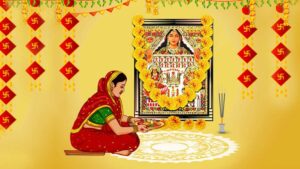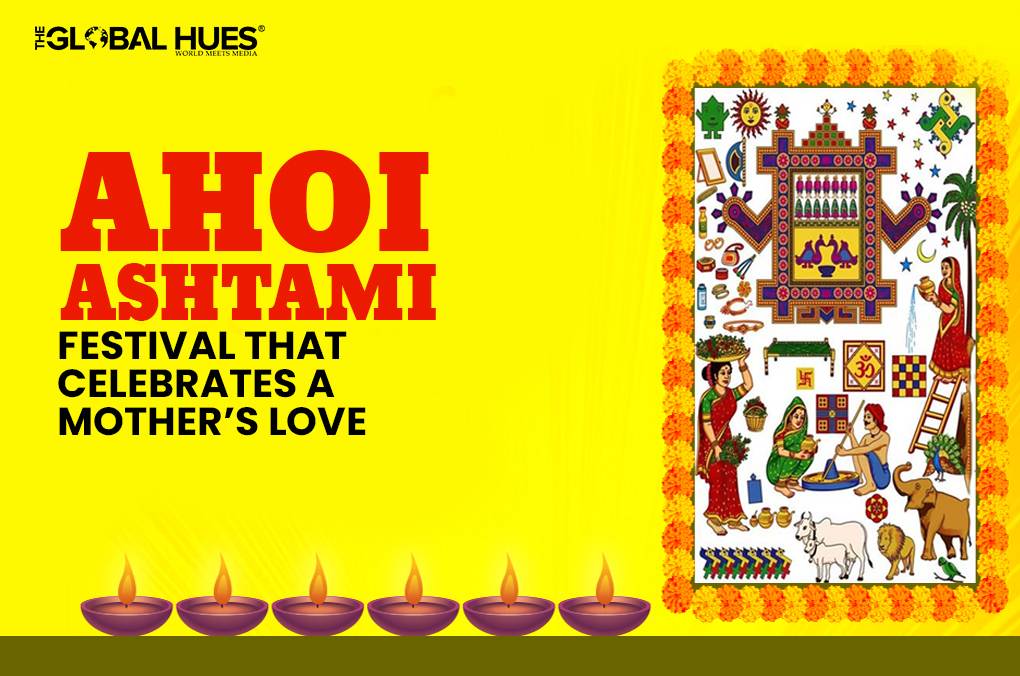The festive season has begun, and after Navratri, Durga Pooja, Dussehra, and Karvachauth, comes Ahoi Ashtami. This auspicious day marks the beginning of the Diwali festival. This festival celebrates the strength of a mother’s prayer.
The festival is known as Ahoi Aathe and is celebrated predominantly by the Banya-Marwari community. On this particular day, the elders organise katha and all the mothers keep fast for the well-being of their children. This year, the festival falls on 5 November 2023.
Some women choose to fast if they face difficulties in conceiving a child or want to become a mother. Mothers perform prayers in the presence of an image of a cub and the Ahoi Ashtami Bhagawati.
The Story Behind Ahoi Ashtami
Once there was a woman who lived in the forest and she had seven sons. In the month of Kartik, she was digging up the soil and suddenly, the axe fell into a den, killing the cub sleeping inside. Slowly, the seven sons of the lady died one by one. She narrated the incident to other ladies and they advised her to pray to Ahoi Ashtami Bhagawati by drawing the face of a cub and offering prayers to it.
She offered her prayers to the goddess for seven years continuously, and by the grace of the Goddess, she got her sons back. Since then, women in Northern India have observed this fast as a means to secure their children’s well-being and prosperity.
Rituals & Puja Vidhi Of Ahoi Ashtami

On this day, mothers wake up at sunrise, eat a few snacks and head for the temple to pray. According to legends, mothers keep a pitcher of water and grains before a drawing of stars and Ahoi Mata on the wall. The elder lady of the house then recites the story of Ahoi Mata and others listen attentively. Given below is the puja vidhi of Ahoi Ashtami:
Before sunset, women should draw the image of Goddess Ahoi on the wall. The image of Ahoi Mata should have Ashtha Koshthak. It means eight corners due to the festival’s association with Ashtami Tithi. Along with a drawing of the Goddess, the images of Sei should be drawn near the goddess.
Once that is done, spread wheat on the floor or the wooden stool, and keep one water-filled Kalash at the place of worship or the Pooja ghar. Keep a small karwa on top of the Kalash and fill it with water and then cover it with its lid. Draw a swastika on the Kalash and tie the sacred thread around the Kalash.
During the pooja, mothers offer the seven grasshots to the Goddess and the Sei. The items in the prayer include 8 Puri, 8 Pua and Halwa.
The eldest member of the family narrates the story and all the other women hold 7 grains of wheat in their hands while listening to the Katha.
The pooja ends with performing the Ahoi Ashtami Aarti.
Summing Up
Ahoi Ashtami celebrates the mother’s love for her children. In this festival, mothers observe fast for the well-being, prosperity, and longevity of their children. The women wake up in the morning, take a bath, have some snacks, and do a pooja, and then they observe the fast for the rest of the day.
Also Read:
- Diwali: Date, Samagri, Mantras, Lakshmi Puja Timings In India
- Govardhan Pooja: Date, History, And Significance
- Bhai Dooj: Celebrating The Bond Of The Siblings
- Significance Of Dhanteras: Celebrating Wealth And Prosperity




